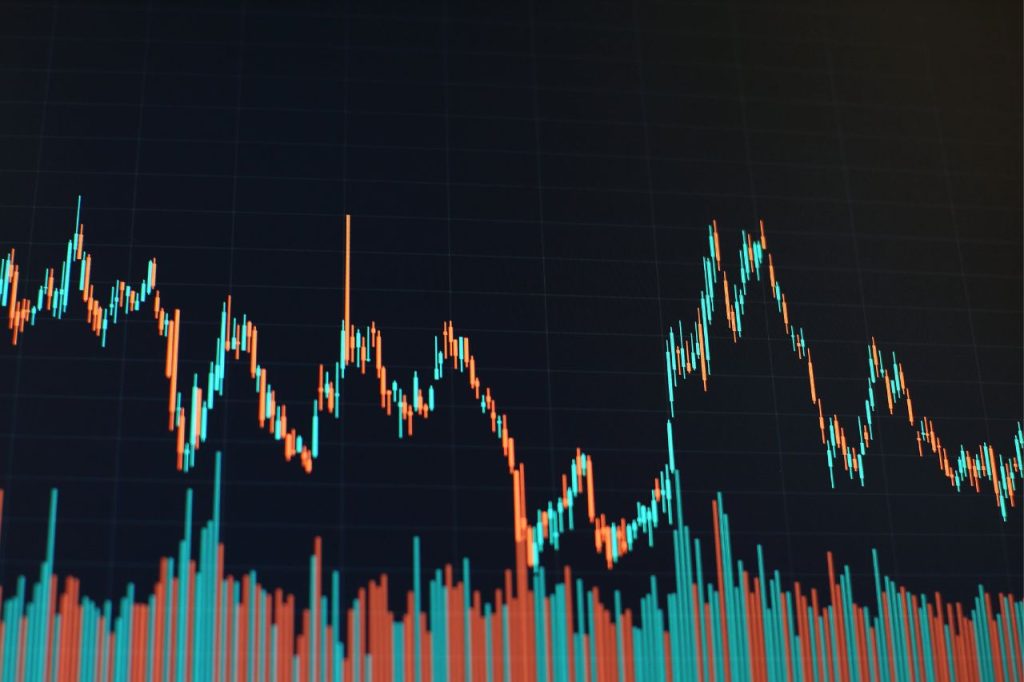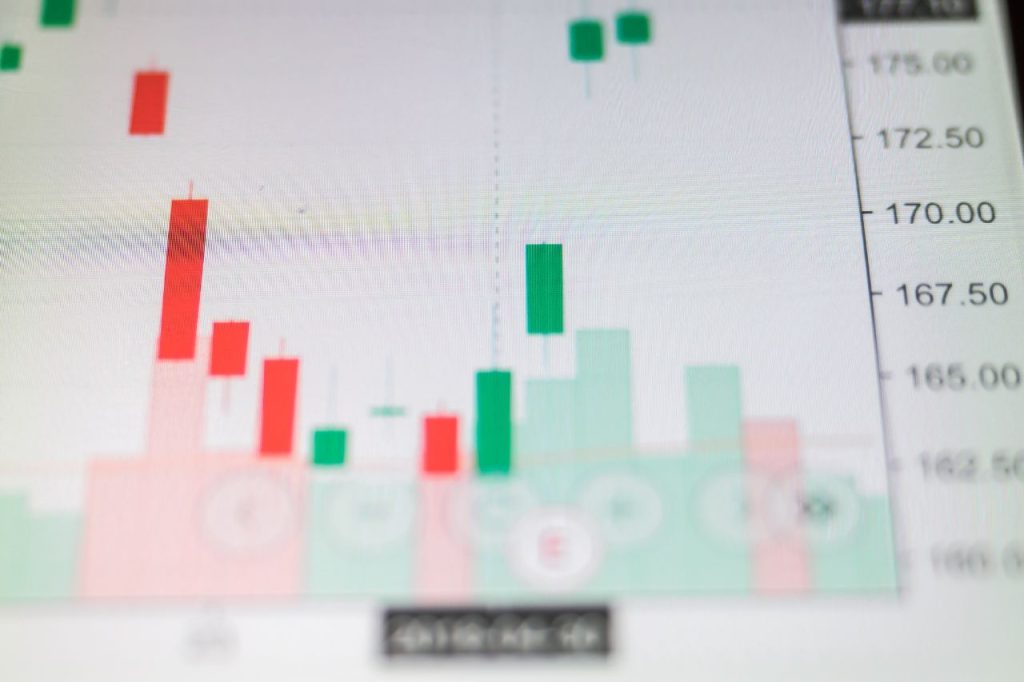Table of Contents
In the fast-paced world of stock trading, making informed decisions is crucial for success. Traders and investors have an arsenal of tools at their disposal to analyze stocks and predict future price movements.
Among these tools, technical indicators play a pivotal role. We will explore the significance of technical indicators in stock analysis and how they work in conjunction with chart patterns.
Technical Indicators in Stock Analysis. Understanding Technical Indicators
Technical indicators are essential tools in stock analysis. They are mathematical calculations and graphical representations of stock data, like price and volume, designed to help traders and investors gain insights into a stock’s potential direction.
These indicators are plotted on price charts, offering a visual representation of market trends.
Imagine technical indicators as a set of mathematical equations that crunch historical and real-time stock data to produce easy-to-understand charts. These charts help traders spot patterns, trends, and potential reversal points in stock prices.
For instance, when an indicator like the Relative Strength Index (RSI) signals that a stock is overbought, it suggests a potential price reversal downward.
Technical indicators essentially reduce the complexity of data, enabling traders to make better judgments, establish entry and exit points, and efficiently manage risk. Whether you’re a novice or an experienced trader, grasping the significance of technical indicators is fundamental to achieving success in stock trading.

Stock Analysis Tools
In order to make wise investing decisions, stock analysis is a comprehensive process that uses a variety of tools and methodologies. We’ll look at a few of the crucial stock research tools that investors and traders rely on to get through the confusing world of financial markets.
Technical Indicators
Technical indicators are mathematical calculations and graphical representations of stock price, volume, or other data. They help traders identify trends, momentum, and potential reversals in stock prices. Popular technical indicators include moving averages, the Moving Average Convergence Divergence (MACD), the Stochastic Oscillator, and the Relative Strength Index (RSI).
Chart Patterns
These are visual representations of historical price movements. They offer insights into potential future price movements. Common chart patterns include head and shoulders, double tops and bottoms, flags, and triangles. Traders use these patterns to anticipate trend reversals or continuations.
Fundamental Analysis
Fundamental analysis involves evaluating a company’s financial health and performance. This includes analyzing financial statements, earnings reports, and key financial ratios. Fundamental analysis tools help investors assess a stock’s intrinsic value and long-term growth potential.
News and Sentiment Analysis
It’s essential to stay current on news and market sentiment. Tools such as news feeds, sentiment analysis algorithms, and social media monitoring help traders gauge market sentiment and react to breaking news that can impact stock prices.

Screening and Scanning Software
Stock screening and scanning software allows traders to filter and identify stocks that meet specific criteria. These tools help streamline the process of finding potential investment opportunities based on predefined parameters like price, volume, and technical indicators.
Options and Derivatives Analysis Tools
For advanced traders, options and derivatives analysis tools can be indispensable. These tools help traders assess risk, evaluate option strategies, and make decisions related to derivatives trading.
Risk Management Tools
Effective risk management is paramount in stock trading. Tools like position sizing calculators, stop-loss orders, and portfolio management software help traders protect their capital and minimize losses.
Online Brokerage Platforms
Modern online brokerage platforms offer a suite of analysis tools, including real-time charts, technical indicators, and research reports. These platforms provide traders with the tools they need to execute trades efficiently.
The Significance of Technical Indicators
The significance of technical indicators in stock analysis cannot be overstated. These tools provide traders and investors with invaluable insights into market dynamics.
Here’s why they are so crucial:
Identifying Trends
Identifying trends is a cornerstone of successful stock analysis, and technical indicators play a pivotal role in this process. When traders aim to determine the future direction of a stock’s price, they rely on indicators like moving averages to reveal underlying trends. Moving averages smooth out the often noisy day-to-day price fluctuations and provide a clear picture of a stock’s trajectory over a specific time frame.
For instance, a simple moving average calculated over a 50-day period would display the average price of a stock over the previous 50 trading days. If this moving average line slopes upward, it suggests the stock is in an uptrend, indicating that prices are generally rising over that period.
Conversely, a downward-sloping moving average indicates a downtrend, signifying a general decline in prices. For traders, this knowledge is priceless since it helps them decide when it is best to purchase (during an upswing) or sell (during a downturn) a stock.
Moreover, recognizing trends through technical indicators also assists traders in setting precise entry and exit points. For instance, if a stock is in an established uptrend, traders might look for opportunities to buy when the price temporarily dips, often referred to as a pullback.

Conversely, during a downtrend, they might aim to sell when the price rallies, again looking for pullback opportunities to maximize gains. In essence, identifying trends through technical indicators forms the bedrock of strategic decision-making in stock trading, providing traders with the crucial information needed to navigate the dynamic and ever-changing world of financial markets.
Confirming Chart Patterns
Technical indicators and chart patterns often work hand in hand to enhance the precision of trading decisions, and their synergy is particularly evident in confirming chart patterns. Visual representations of past price movements, known as chart patterns, can indicate anticipated future price changes, such as trend reversals or continuations.
However, relying solely on chart patterns can sometimes lead to false signals. This is where technical indicators, like the Relative Strength Index (RSI), step in to provide confirmation and validation.
Take, for instance, the scenario of a trader identifying a bullish chart pattern like a double bottom, which typically suggests a potential upward reversal in a stock’s price. While the pattern itself may be promising, it’s not uncommon for traders to seek additional confirmation before committing to a trade.
This is where the RSI, an oscillator-type indicator, becomes invaluable. If the RSI simultaneously indicates that the stock is in an oversold condition or shows bullish momentum, it reinforces the bullish sentiment conveyed by the double-bottom pattern.
This confirmation from the technical indicator gives traders greater confidence in the validity of the pattern and the potential for an upward price movement.
In essence, traders can decrease the possibility of erroneous signals and make better trading decisions thanks to the synergy between technical indicators and chart patterns.
By confirming chart patterns with indicators like the RSI, traders can enhance their risk management and improve the probability of successful trades, all while using a well-rounded analytical strategy to navigate the stock market’s complexity.
Overbought and Oversold Conditions
Identifying overbought and oversold conditions in the stock market is a fundamental aspect of technical analysis, and it’s where indicators like the Relative Strength Index (RSI) and Stochastic Oscillator come into play.

These indicators provide crucial information about probable price reversals by assisting traders in evaluating the present status of a stock’s price in relation to its recent performance.
When a stock is considered overbought, it means that its price has risen significantly over a short period, and it might be due for a correction or pullback. The RSI and Stochastic Oscillator provides numerical values within a specific range (usually 0 to 100), and when these values exceed certain thresholds (often 70 for overbought conditions), it indicates that the stock may be overextended.
Traders interpret this as a warning sign that the stock’s price may reverse downward in the near future. It’s not necessarily a signal to sell immediately but rather a prompt to exercise caution and consider taking profits or tightening stop-loss orders.
Conversely, when a stock is deemed oversold, it implies that its price has fallen sharply and may be due for a rebound. In this case, the RSI and Stochastic Oscillator values typically fall below a specified threshold (often 30 for oversold conditions).
This signals to traders that the stock may have been sold off excessively and could potentially experience a price bounce or reversal to the upside. Traders view oversold conditions as potential buying opportunities, but they should conduct further analysis to confirm the timing and strength of the potential reversal.
Volatility and Momentum
Understanding a stock’s volatility and momentum is essential for traders to adapt their strategies effectively. Indicators like MACD and Average True Range (ATR) play important roles in providing these insights.
Volatility (ATR)
This is the degree of price fluctuation in a stock. High volatility means the stock’s price is experiencing significant and rapid changes, while low volatility indicates more stable price movements. The Average True Range (ATR) is a valuable tool for measuring a stock’s volatility. A higher ATR suggests greater price swings.

This might provide traders with both chances and hazards. For instance, during high volatility periods, traders might use wider stop-loss orders to account for larger price swings. Conversely, during low volatility, they may use tighter stop-loss orders to limit risk. Understanding volatility helps traders manage risk and position size effectively.
Momentum (MACD)
Momentum refers to the strength and direction of a stock’s price movement. Traders often seek to identify stocks with strong momentum, as it can indicate the continuation of an existing trend. The Moving Average Convergence Divergence (MACD) is a widely used momentum indicator. It consists of two moving averages, one representing short-term momentum and the other long-term momentum.
A popular momentum indicator is the Moving Average Convergence Divergence (MACD). It generates a bullish signal, suggesting upward momentum. Conversely, when the short-term average crosses below the long-term average, it produces a bearish signal, indicating downward momentum. Traders use MACD signals to make decisions on entering or exiting positions.
Incorporating volatility and momentum indicators into their analysis allows traders to fine-tune their strategies based on the current market conditions. For example, if the ATR indicates high volatility, a trader might adjust their profit targets and stop-loss levels accordingly.
Similarly, if the MACD shows strong upward momentum, a trader may be more inclined to go long on a stock that aligns with this bullish sentiment. By using these insights, traders can enhance their decision-making and adapt to the dynamic nature of the stock market, ultimately improving their chances of success.
Divergence
Divergence is a crucial concept in technical analysis, and it can provide traders with valuable signals regarding potential price reversals or trend changes in stocks. Divergence occurs when there is a disconnect between the price of a stock and a relevant technical indicator, like the RSI or Moving Average Convergence Divergence (MACD).

When these two elements move in opposite directions, it sends a powerful message to traders.
There are two primary types of divergence:
Regular Divergence
Regular divergence occurs when the price of a stock makes higher highs (in an uptrend) or lower lows (in a downtrend), but the indicator fails to follow suit. For example, in an uptrend, the stock’s price may reach a new high, but the RSI does not.
This suggests that the momentum behind the trend is weakening, and a potential trend reversal or correction may be on the horizon.
Hidden Divergence
Hidden divergence, on the other hand, occurs when the price of a stock and the indicator move in opposite directions, but rather than a change in direction, they indicate a continuation of the existing trend. In this case, the price makes lower lows (in an uptrend) or higher highs (in a downtrend), but the indicator disagrees. Hidden divergence suggests that the prevailing trend still has strength and is likely to continue.
Traders use divergence as a powerful tool to fine-tune their entry and exit points in the market. When they spot regular divergence, it may prompt them to consider taking profits or tightening stop-loss orders, anticipating a potential trend reversal.
Conversely, hidden divergence can provide confidence in staying with an existing trend and not exiting prematurely. In both cases, divergence serves as an additional layer of analysis that helps traders make more informed decisions and navigate the complex dynamics of the stock market with greater precision.
Integrating Technical Indicators with Chart Patterns
Integrating technical indicators with chart patterns is a strategic approach that traders use to enhance the accuracy of their stock analysis. While chart patterns provide visual cues about potential price movements, technical indicators serve as confirmation tools, adding an extra layer of confidence to trading decisions.
Here’s how this integration works:
Confirmation of Patterns
Chart patterns, like head and shoulders, flags, or triangles, often signal potential reversals or continuations in a stock’s price trend. However, traders seek confirmation to reduce the risk of false signals. This is where technical indicators come into play.
For instance, if a trader identifies a bullish pattern like a cup and handle, they might look to an indicator like the Relative Strength Index (RSI) to confirm that there is positive momentum supporting the pattern. If the RSI shows strength and bullishness, it adds credibility to the anticipated upward move implied by the chart pattern.
Entry and Exit Points
Integrating technical indicators with chart patterns helps traders refine their entry and exit strategies. Let’s say a trader spots a double-bottom pattern, which typically signifies a bullish reversal. To increase the precision of their trade, they might wait for the RSI to show that the stock is not in an overbought condition, indicating that there is room for upward movement.
This cautious approach helps traders avoid entering trades prematurely and improves their chances of capitalizing on the pattern’s potential.
Risk Management
Combining technical indicators with chart patterns is also a risk management strategy. For instance, a trader can use an indicator like the Average True Range (ATR) to determine the projected size of the move if they spot a bearish chart pattern, such as a descending triangle, which suggests a likely price decrease.
They can use this knowledge to establish proper stop-loss orders to reduce possible losses if the deal turns out poorly.

Conclusion
In the realm of stock analysis, technical indicators are invaluable tools for traders and investors. They offer indispensable insights into price trends, momentum, and potential reversals.
By effectively integrating technical indicators with chart patterns, traders can make more informed decisions, manage risk, and increase their chances of success in the dynamic world of stock trading. So, whether you’re a novice or an experienced trader, understanding and utilizing technical indicators alongside chart patterns is a crucial step toward mastering the art of stock analysis.










